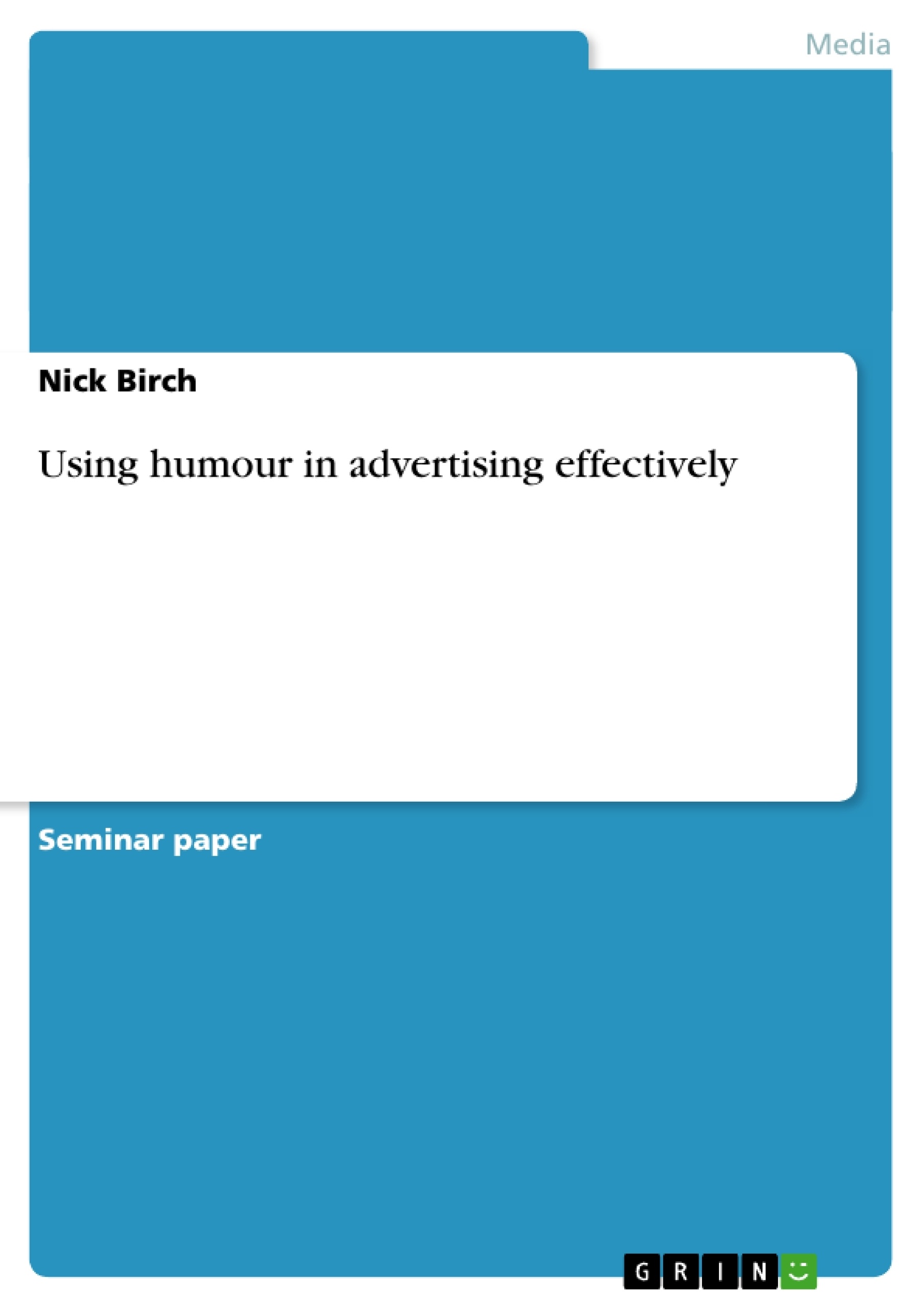Advertising is all about getting attention. One of the best ways of getting attention through advertising is adding humour. When employed correctly, the power of humour is undeniable.
Professional Advertising (N/A) believes that ‘[t]he best ways to get attention with advertising are with strong visuals, sex, powerful headlines, and humour.’
From all the types of advertising appeals, such as Emotional, Rational, Sex, Scarcity and Humour, ‘[h]umour can be an excellent tool to catch the viewer’s attention and help in achieving instant recall which can work well for the sale of the product. Humour can be used effectively when it is related to some benefit that the customer can derive without which the joke might overpower the message’ (Ashwini, 2009). Humour is most effective when it is used to reinforce an existing message, rather than simply adding to it.
Catanescu & Tom (2001) maintain that ‘[a]s previous research has revealed... [their] study shows that humour is used more frequently in television commercials than print advertisements’ and so it is with this acumen that generates the focus on television commercials. What humour achieves exactly can differ from one advertiser to the next, but its primary function seems to be about getting attention, regardless if it is good or bad attention.
According to a 1993 Journal of Marketing study that examined multinational effects of humour on advertising, ‘humour is more likely to enhance recall, evaluation, and purchase intention when the humorous message coincides with ad objectives, is well-integrated with those objectives, and is viewed as appropriate for the product category. Under such circumstances, humorous advertising is more likely to secure audience attention, increase memorability, overcome sales resistance, and enhance message persuasiveness’ (Dubois, 2010).
Table of Contents
- Introduction
- Types of Humour
- Using Humour Effectively
Objectives and Key Themes
This text explores the effectiveness of humor in advertising. The author analyzes different types of humor, evaluates their impact on audience perception, and provides insights on how to utilize humor strategically for optimal results.
- The importance of humor in advertising
- Different types of humor used in advertising
- The effectiveness of humor in capturing attention and promoting product recall
- The potential risks and limitations of using humor in advertising
- Strategies for maximizing the effectiveness of humor in advertising campaigns
Chapter Summaries
Introduction
This chapter introduces the concept of using humor in advertising and its effectiveness in capturing audience attention. It highlights the importance of humor in reinforcing existing messages and achieving instant recall, emphasizing the need to connect humor to the product's benefits. The chapter also discusses the prevalence of humor in television commercials and its potential to enhance recall, evaluation, and purchase intention.
Types of Humour
This chapter outlines various types of humor commonly employed in advertising, including comparison, personification, exaggeration, pun/parody, sarcasm, silliness, and surprise. It provides examples of how these types of humor are utilized in real-world commercials, illustrating their applications and effectiveness.
Keywords
The key concepts explored in this text include humor, advertising, attention, recall, effectiveness, types of humor, strategy, risk, limitations, audience, and brand image. These keywords reflect the focus on understanding the role of humor in advertising and maximizing its potential for achieving marketing goals.
- Citation du texte
- Nick Birch (Auteur), 2011, Using humour in advertising effectively, Munich, GRIN Verlag, https://www.grin.com/document/269678




